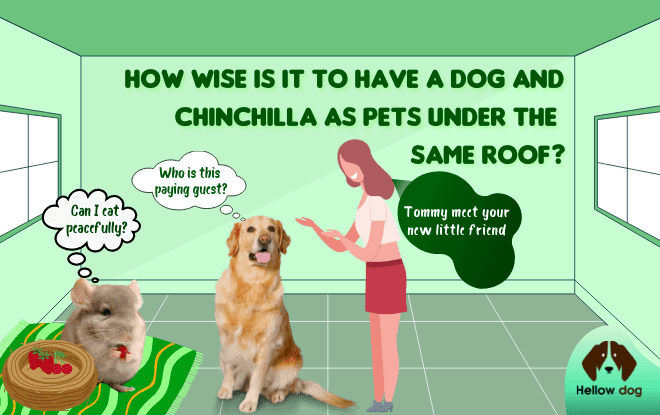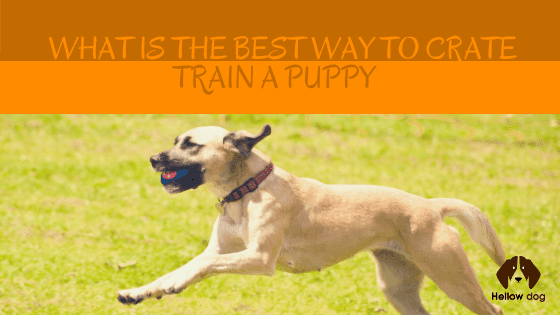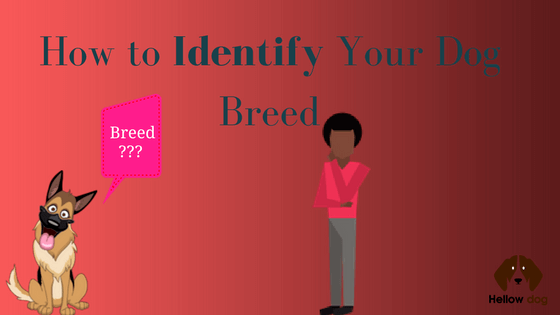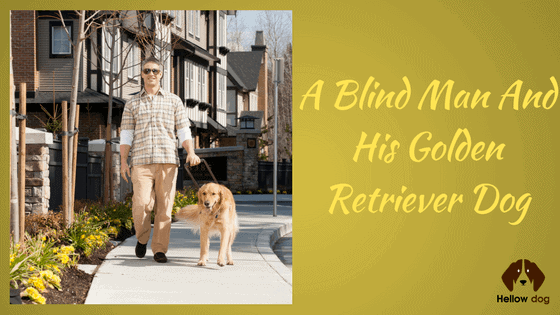Dogs and cats commonly make good mates, but how about dogs and chinchillas?
Keeping a canine and a rodent in one team can be tougher as chinchillas are so small compared to dogs. That makes a chinchilla look more like food to the fangs.
But the possibility of making these pets friends in range depends on the introduction. It should take lots of effort to train the dog to respect the rodent while letting the chinchilla know that its housemate is not a predator.
So, if you happen to have adopted a chinchilla, please read through this article to know how to keep a dog and chinchilla as pets under the same roof.
**NOTE: We don’t encourage any unsupervised “play” between these two species even when they seem to get along.

How to keep a dog and chinchilla as pets under the same roof
Pre-introduction
It could be tough to introduce a large dog to a rodent concerning size. Allowing a grown GD or GS to a chinchilla may frighten the small animal. It’s best to set up a barrier where the chinchilla is safe in its zone.
Secondly, have the two pets in separate rooms when you are not there. Make sure the puppy can’t reach the chin pet in any way. Also, ensure that your chinchilla’s cage is securely latched.
Once you confine the chin, gently walk your dog to the crate and let him sniff the presence of the rodent, and acknowledge him that you are fine with the chinchilla around.
Pay true close attention to the dog to control sudden jumps and bark. If he does, you can soothe him with a gentle voice and treats. Try to encourage the pup to sniff more to his roomie and praise this friendly act.
Don’t rush to instant familiarity in this first meet. It can take a few days for your pup to get used to the new furry buddy. Let the introduction happen in 2 to 3 days for the pets to get familiar with each other’s odor.
For the first encounter, you should have someone to assist in controlling the dog or the chin. When your pup is calm enough after a few times seeing the chin, you can arrange for the two to meet up.
Let one person hold your pup, ideally a family member who can command the dog; you will be the one who hands the chinchilla. Slowly raise the chin to the pup while soothing both pets with your soft voice. If any aggression comes from the pup, stop the meeting until the next day.
If the two starts sniffing each other, you will need to praise the pup and let him know this good behavior is rewarding.
On the chin side, cuddle him with your hand and be cautious of freak-out bites. If the rodent reacts negatively, you also stop the meet and pet him to calm.
In this stage, it’s important to keep control of both pets and use a lot of cuddles, a soft voice, and treats to encourage a friendly encounter.

Why having a dog and chinchilla as pets fantastic?
Not many pet lovers are into cats or bearded dragons. Many of us, or our kids, love having a chinchilla as a pet but are hesitant to adopt one because we already own dogs. Several families manage to separate the two animals but accidents happen. So, it’s best first to train the two species to be home mates.
Many owners successfully strike up this friendship and see the two by each other. Small to medium dogs can make good playmates with chinchillas, and the rodent pretty much enjoys canine company.
Kids having a pup and chinchilla will learn to take responsibility taking caring for this relationship. We all know that children with pets have more vivid and cheerful lives.
Conclusion
Keeping a dog and chinchilla as pets is not advisable but possible. When having these two in the same house, you must pay extra attention and caution. Though trainable, dogs are still predators to chinchillas.
Never leave your chin alone with the dog around as canines have “prey drive” which may trigger their hunting instinct when around a small animal.
So, friending a chin a dog is possible but with extreme care and responsibility. If you have your kids loving a chinchilla while a dog is in the house, make sure they are all safe when playing with each other.
Lastly, when you lock the chinchilla, make sure the cage is completely secure so that any dog can’t break in. It’s best to have a chinchilla room where your waggy tail can’t enter.

FAQs
Which Dog breeds get along with Chinchillas?
Large dogs are likely predators to such small animals as chinchillas. However, many canines of large size have a mild temper that makes them good buddies to any species. They are Golden retrievers, Labrador retrievers, Cavalier King Charles Spaniels, and the Great Pyrenees are excellent chinchilla dogs.
Smaller dogs like Shiz Tzu, Pomeranian, and Japanese Chin are less dangerous. But be cautious with Bullies, Chihuahuas, Pit Bulls, Jack Russells, Dachshunds, Corgis, and Terriers. Though small and medium, these dogs own hunting instincts that can kill your chinchilla in a blink.
What’s bad about keeping a Chinchilla around Dogs
Improper introduction or housing of these two pets can lead to a chinchilla vs. dog scene. The small creature is easy to get frightened out of a larger animal. The worst thing that can happen is the rodent will have a heart attack before the dog can even touch it. Distress can kill your chin first.
Playful dogs can get over-excited with a chin around them and consider them as toys. Even when you have your rodent caged, medium to large dogs can try to attack the crate. That also leads to a chin’s fright.
Is it better to introduce a Chin to a Puppy?
Puppies are gentler and more obedient. They are more amendable to a chinchilla introduction, thus making them better than a grown dog. Training a puppy to friend a chin is so much easier. But don’t be subjective to let the chin roam around without your supervision, even when your pets are already friends.
Can you let a Chinchilla play with a Dog?
Natural players like dogs, even the best-behaved dog, may hurt the rodent without consciousness. Plus, chinchillas won’t consider a dog as a buddy regarding the size and fangs. A jumping dog is a potential threat to your small animal.
If you want the two to meet and enjoy the company, you must be there to handle the situation. In any case, if your dog’s about to hop, bark, and approach the chin, move the rodent away. Or if the chin reacts in a bad way, put it back in the cage where it feels safer.







